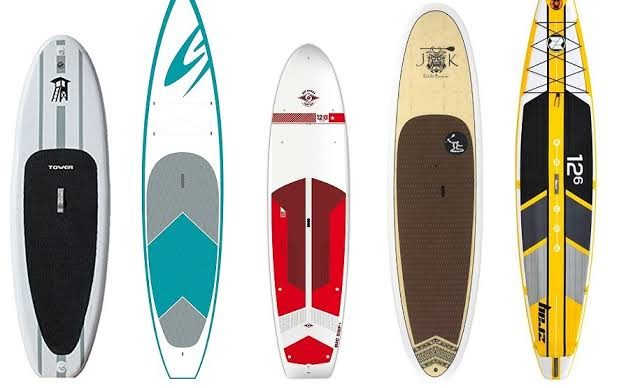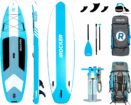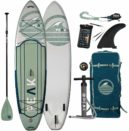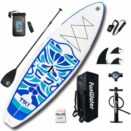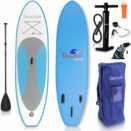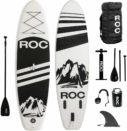Beginners and those who are new to the world of paddleboarding will usually ask one crucial question: what size of paddleboard do they need? While shopping for a paddleboard, look for a board that provides enough flotation and stability for your skill and body weight, but paddles fast enough for a satisfying experience and will suit the paddling you will be doing.
The most popular SUP boards for general use are 10-11 feet in length and between 32 and 34 inches wide. If stability is a high priority for you, you’ll want to look for a board that is 33-34 inches wide. You can go wider, but you may end up with a board that is heavy and sluggish; therefore, it will be less fun to paddle.
If portability and maneuverability is your priority, or if you weigh less than 150 lb, you may want to go shorter than average and opt for a board in the 9’6” length range. 9’6” boards are a lot of fun and can be plenty stable if the design is right. Just make sure the width is appropriate for the length, which is about 30-32 inches. A 9’6” board that is wider than 32 inches will be slow to paddle.
But if speed and straight tracking are priorities, then you might consider a 12’6 touring or race board. Thirty-two inches is a good width for a stable touring board. Race boards can be 28” or even 26” narrow, which makes them very fast but less stable, so this choice may not be the best for beginners. 30” is a common compromise width for a 12’6 board that may be used for both touring and racing.
However, if you go with an inflatable model, the extra length does not pose a storage issue, and you can expect excellent performance from a quality inflatable touring SUP.
There are also specialized shapes for specific uses. 36 inch wide boards are commonly used for running rapids but are too wide for general paddling, as they are slow, and you have to reach over more to keep your stroke vertical.
Boards under 9 feet in length are usually designed for ocean or river surfing, but the lack of volume makes it harder to stay balanced for general paddling. Hardboards are sculpted to reduce weight and optimize race and surfing performance, but they provide less stability and buoyancy for the recreational paddler. Board thickness is just as important as length, width, and outline shape.
Inflatable SUP boards are for all-around paddling, especially for riders who are developing their skills, and should generally be 5 inches thick. An exception to this would be heavier paddlers (240 lbs and up) who might benefit from the extra volume of a 6-inch thick board, making the extra bulk and other disadvantages of a 6-inch board a reasonable tradeoff.
Settling on a board size is just the beginning of your board purchase research. Don’t buy a board without first understanding the full range of available inflatable SUP board shapes, constructions, and fin systems. The best way to gain this understanding is to spend some time studying a comprehensive and technically advanced inflatable SUP product line.
